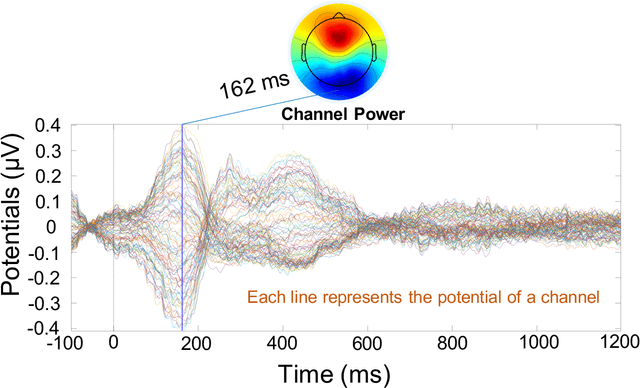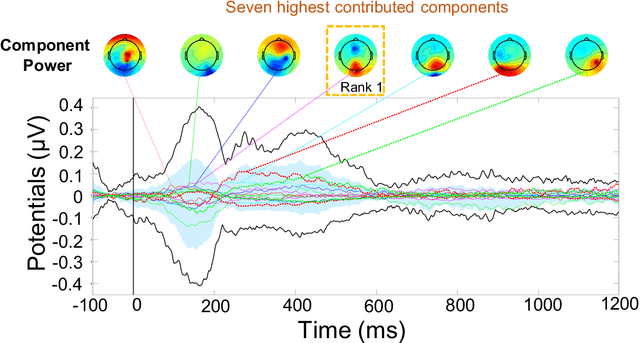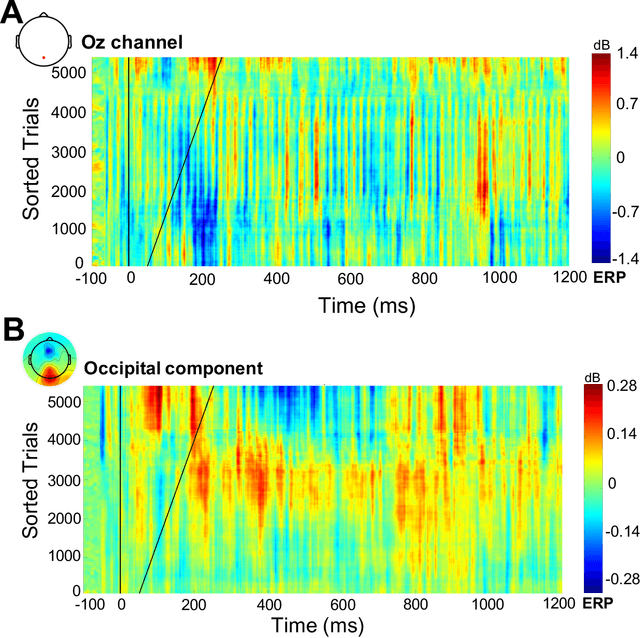Retrieving Event-related Human Brain Dynamics from Natural Sentence Reading
Paper and Code
Mar 29, 2021



Electroencephalography (EEG) signals recordings when people reading natural languages are commonly used as a cognitive method to interpret human language understanding in neuroscience and psycholinguistics. Previous studies have demonstrated that the human fixation and activation in word reading associated with some brain regions, but it is not clear when and how to measure the brain dynamics across time and frequency domains. In this study, we propose the first analysis of event-related brain potentials (ERPs), and event-related spectral perturbations (ERSPs) on benchmark datasets which consist of sentence-level simultaneous EEG and related eye-tracking recorded from human natural reading experiment tasks. Our results showed peaks evoked at around 162 ms after the stimulus (starting to read each sentence) in the occipital area, indicating the brain retriving lexical and semantic visual information processing approaching 200 ms from the sentence onset. Furthermore, the occipital ERP around 200ms presents negative power and positive power in short and long reaction times. In addition, the occipital ERSP around 200ms demonstrated increased high gamma and decreased low beta and low gamma power, relative to the baseline. Our results implied that most of the semantic-perception responses occurred around the 200ms in alpha, beta and gamma bands of EEG signals. Our findings also provide potential impacts on promoting cognitive natural language processing models evaluation from EEG dynamics.
 Add to Chrome
Add to Chrome Add to Firefox
Add to Firefox Add to Edge
Add to Edge